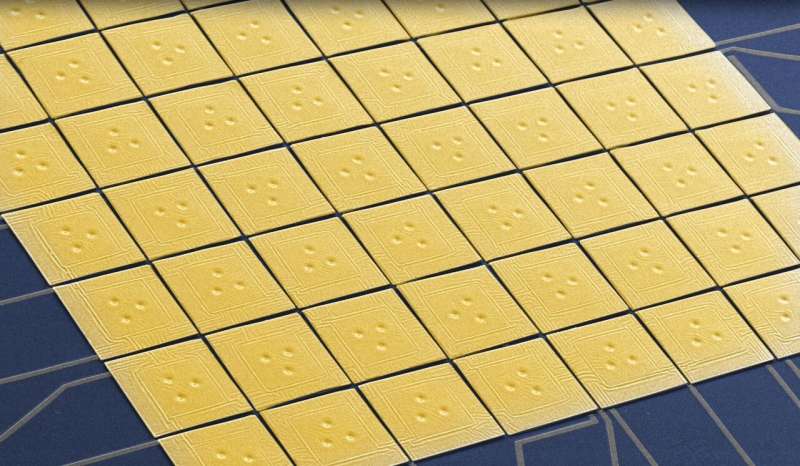Artist’s rendition of a nuclear optical clock. Credit: P. G. Thirolf et al., Ann. Phys. 531, 1800381 (2019).
A team of researchers from Germany and Austria has taken a new measurement of the nucleus of a thorium-229 isotope, moving one step closer to a nuclear clock. In their paper published in the journal Physical Review Letters, the group describes how they measured the isotope and their results.
Over the past few hundred years, scientists have developed ever more accurate clocks. Evolving from quartz movements to the ticking of electrons in an atomic shell, scientists have advanced timekeeping to the point that some atomic clocks are accurate to one part in 1018—accurate enough not to lose a single second over the life of the universe to date.
But still, scientists want an even more accurate clock: one based on oscillations of the nuclei of an atom—or in this case, an isotope. Researchers have attempted to make such a clock previously, but have failed for various reasons, mostly related to the high transition energies involved. Most such work has been focused on thorium-229 because its excited state is the lowest known for all atomic nuclei.
Until now, multiple attempts have been made to identify the exact wavelength of ultraviolet light that could be used to excite the thorium-229, which would reveal the kind of laser that could be used to create a nuclear clock. Each has given slightly different results, but scientists are getting closer to the answer. In this new effort, the researchers have come the closest yet, bringing with it the possibility of a new age of time-keeping.
A false color scanning electron microscopy image of the 8x8 array of maXs30 detectors. Credit: ©: Matthäus Krantz
The work involved measuring the radiation emitted by a sample of uranium-233 as it decayed to several types of isomers, one of which was thorium-229—a technique that has been tried before. But this time, the team used a method that was more precise, which led to a more precise estimate of the wavelength of ultraviolet light needed to measure the oscillations of the isotope's nucleus. They measured the transition energy at 8.1 electronvolts, which would mean an ultraviolet laser with a wavelength of 153.1 nanometers could be used to build the elusive nuclear clock. The team plans to carry out multiple measurements using the same technique to reduce uncertainty, and perhaps to arrive at the exact measurement needed to build the most accurate clock imaginable.
More information: Tomas Sikorsky et al. Measurement of the Th229 Isomer Energy with a Magnetic Microcalorimeter, Physical Review Letters (2020). DOI: 10.1103/PhysRevLett.125.142503
Lars von der Wense. Ticking Toward a Nuclear Clock, Physics (2020). DOI: 10.1103/Physics.13.152
Journal information: Physical Review Letters
© 2020 Science X Network
























